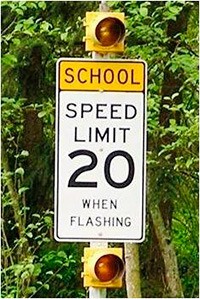Kent Police and city officials have no immediate plans to expand the school traffic camera program to catch speeders beyond the two-school pilot project.
The City Council’s Public Safety Committee plans to continue to monitor the program to see if it results in a reduced number of speeding drivers in the 20 mph school zones next to Neely-O’Brien Elementary and Sunrise Elementary.
Nearly 5,000 drivers were caught speeding in the two zones during the first six months of the program from January through June. The cameras are operating again this fall during the 30 minutes before school opens and 30 minutes after school closes.
The city could receive as much as $869,000 in ticket revenue from the six months when all of the cases are eventually closed. So far, the city has received $482,200 in revenue with 2,965 cases closed, according to Kent Municipal Court records. Another 2,003 cases remain open.
Police Chief Ken Thomas said the revenue is being kept in a fund to pay for the program and to cover future costs when citations and revenue are expected to drop as more drivers slow down. Speeding infractions can drop as much as 60 to 80 percent after six months to one year, according to a Kent Police study of other cities with cameras.
Kent School District officials asked the city to install the traffic cameras. Superintendent Edward Lee Vargas told Thomas he supports expanding the program to more schools.
“It’s a policy decision that needs to be made whether we expand the program and add schools,” Thomas said at a Tuesday Public Safety Committee meeting. “If we do, if you have additional cameras our insurance policy (money saved in a fund) needs to be there or go up to sustain it. The data from the original study shows there are additional schools that have significant safety problems for our kids.”
Councilwoman Dana Ralph then asked Deputy City Attorney Pat Fitzpatrick about the city’s five-year contract with Arizona-based American Traffic Solutions (ATS), Inc., which provides the camera services that include the equipment as well as mailing out tickets. The city pays $182,000 per year to ATS for the cameras, Thomas said.
“I need a little bit of clarification,” Ralph said. “I thought when we were talking about this originally there is something built in to the contract that if there were not enough citations issued to cover the costs back to ATS that there is some reprieve for that.”
Fitzpatrick responded the city does have financial protections in the contract if ticket revenue doesn’t cover the cost.
“The way we structured the contract, if we have a drop in citations and the money collected does not cover the cost, then that debt rolls over to the next month and it will keep rolling over until the end of the contract period,” Fitzpatrick said. “If we haven’t been able to pay back the debt… .then the debt gets wiped out. So there is little risk.”
But it’s too early to know a clear revenue picture, Fitzpatrick said.
“We’re still only in the first six months of this program,” he said. “It is still very new to us. We just are trying to be as conservative as possible. It’s a little nerve racking to enter a contract for $91,000 per year per school and not knowing what the results are going to be. We decided it’s in the public’s interest to build up a good enough buffer that we have a solid program. At some point, there might be enough money in that fund to transfer some of it to police patrols for traffic and maybe in school zones that don’t have cameras.”
The city’s Finance Department oversees the fund, Fitzpatrick said.
Councilman Jim Berrios, chairman of the Public Safety Committee, asked Thomas to keep the panel and council up to date about the number of speeding citations each month at the two schools.
“Because of how serious this is and the intent of safety for the kids, if you could give a brief update about where the numbers are with those two schools, and we’re hoping we see drops in those numbers every month,” Berrios said. “I think what happens here is people start talking about how serious this is and perhaps we can get a buzz out there that people need to slow down because of safety.”
A total of 4,968 tickets were issued at the two schools the first six months of this year, including 2,920 at 1 to 9 mph over the speed limit ($124 fine) and 2,048 at 10 mph or more over ($248 fine).
The fine is higher for faster speeds because studies show if someone is struck by a vehicle going more than 9 mph over the speed limit they are more likely to be seriously injured or killed, Fitzpatrick said.
“A lot of what our conversation was last year was getting out in front of the horrible thing that could happen and making sure we weren’t heading down that path,” Ralph said. “These numbers make it in my mind more of a when than an if and that was a lot of what we talked about is to make sure we don’t have those tragic things happen.”
Talk to us
Please share your story tips by emailing editor@kentreporter.com.
To share your opinion for publication, submit a letter through our website https://www.kentreporter.com/submit-letter/. Include your name, address and daytime phone number. (We’ll only publish your name and hometown.) Please keep letters to 300 words or less.

